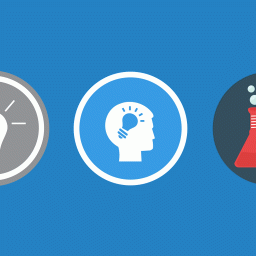Modern customers are very sensitive towards brands as they believe in and expect quality experience through products and services. Hence, the success of any brand lies in the strength of customer experience it offers and its ability to show significant results. More sales, more loyalty, and more customers are some indicators to evaluate the brand’s success.
However, a great majority (of brands) is still unaware of the action plan that drives optimal results through consumer experience. The matter of fact is any brand that ignores digital customer experience will fail to achieve business goals in 2017.
Have a look at few statistics:
– 89% of consumers have stopped doing business with a company after experiencing poor customer service (RightNow Customer Experience Impact Report).
– 55% of consumers would pay more for a better customer experience (DEFAQTO Research).
– 86% of buyers will pay more for better customer experience but only 1% of customers feel that vendors consistently meet their expectations (Forbes).
– A customer is 4 times more likely to buy from a competitor if the problem is service related versus price or product related (Bain & Co)
– 90% of customers have had poor experiences seeking customer support on mobile (Software Advice).
– Engaging with customers means 40% more revenue per person (Bain & Co)
– 72% of customers expect response to their complaint on social media within an hour (Econsultancy)
– 50% of product investment projects will be redirected to customer experience innovations by 2017 (Gartner).
– 60% of organizations see that customer service will be the top source of competitive differentiation in the next three years (The Service Councils Service Transformation: The Business Case).
– 2% increase in customer retention has the same effect as decreasing cost by 10% (Leading on the Edge of Chaos, Emmet Murphy & Mark Murphy)
When it comes to physical shopping, factors like environment, ambient noise, physical location temperature, and music play a vital role in customer experience. Conversely, online buyers are more concerned about speed, results and time. Since they are in hurry and have multiple options, they do not wait even for a few seconds. A study has found that 50% of consumers leave a website if the page took longer than ten seconds to load. Hence, you’ve to ensure that people get what they are looking for as quickly as possible.
In order to design a satisfying digital customer experience, companies, and business managers have to plan for computers, smartphones, and tablets that are the customer experience interfaces. Your ability to guide people to the right set of information, location, product, or solution will determine the level of loyalty you earn.
In the following, we are sharing a modern perspective of customer experience, which, if properly applied, can lead to customer satisfaction, growth, loyalty, and sales.
1. Consistency is Key to Brand’s Loyalty
Today, the brand is viewed as a mosaic which is a combination of numerous individual touch points. If a consumer decides to leave the brand and go for its competitor, the only thing that could convince her to stay is a mosaic impression. Companies that fail to deliver innovative digital experience result in a rambling and perplexing impression of the brand.
Apart from consumers’ frustration, brand loyalty decays over a certain period. The majority of companies that consider consistency as an afterthought are faced with a decline in sales and lesser brand loyalty as compared to previous years. Therefore, you must deliver good customer experience and that too every time.
2. Tools to Improve Digital Customer Experience
One of the best ways to enhance customer experience is to seek customer opinion and then work on the findings – address their concerns and meet expectations. Opinion gathering tools are a great help here as they enable companies to evaluate customer response over the time in order to know how they feel about a particular product or service.
Businesses have to play an active role in measuring customer’s expectations by asking key questions directly. Surveys, opinion polls, opt-ins, data analytics, and expert opinions are few ways to seek and understand prospects’ feedback. There are research companies and focus groups that can help you with quality advice and study as well. Budget, scope of work, and complexity should help you make the right choice.
Similarly, social media can be a great source of information and feedback. By employing the concept of social customer service, a business can respond to complaints and earn loyalty.
3. Digital Initiatives Should Ease the Customer Journeys
A large number of companies awkwardly add digital components to customer’s journey that does not benefit the company and contradicts its value proposition. These unnecessary additions to customer journey don’t get much attention but make the experience worst.
For example, a departmental store prints web address on every receipt for the customers to participate in the online survey. However, the customer journey with the departmental store never had any digital component; hence, why would anyone go online and complete the survey? Moreover, going digital and online is not necessarily the same.
In this scenario, the best approach to developing an app where customers can interact and participate in the survey. This will work better as it does not require any extra effort from the consumer and save much of their time. It will also capture customer loyalty and lets customer place order beforehand without waiting in long queues.
4. Business Perspective
Digital experience is meant to help you achieve business goals in the form of profit, leads, growth, or large scale brand awareness. Drafting bigger goals and skimming them with the passage of time will help you clarify the success of the brand. Frequent participation in ideation and brainstorming can help align business goals aligned with the corporate strategic objective.
Over the past few years, many brands have identified the clear differences in adopting digital maturity. While adopting the cutting-edge technology, the reason for failure is unchanged mindset and culture of employees. If you want to sustain in the modern competitive environment, it is vital to have a long-term business perspective with a focus on the customer.
5. Future Perspective
There is a certain time in which digital experience can account for you as you develop the strategy. For instance, if the digital experience is for a certain event, the digital experience is for short term and will not be applicable for a longer span. If you are thinking of scaling it up, make sure to be realistic and set the budget accordingly.
It is important to guide the stakeholders on all the perspectives of digital experience so that they could focus on it and take responsibility. In case, there is an overlap in the strategic elements, stakeholders will address it. Failing to address the problem will de-track your project. Therefore, the future perspective should be backed by a qualified team.
Conclusion
The fundamentals of digital customer experience exist from a very long period of time. Most of the digital marketers are aware of the fact that customer-centric attitude is the core of the digital marketing. Web developers and optimization practitioners are all aware of the online usability and logical consequences for improving the digital customer experience, irrespective of generations. However, the major challenge is ignoring the core and not understanding the contextual dimension of digital experiences.













